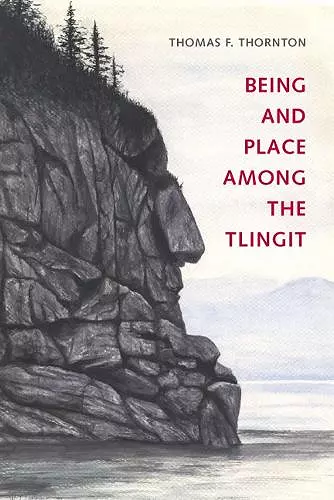Being and Place among the Tlingit
Thomas F Thornton author K Sivaramakrishnan editor
Format:Hardback
Publisher:University of Washington Press
Published:23rd Jul '15
Currently unavailable, and unfortunately no date known when it will be back
This hardback is available in another edition too:
- Paperback£19.99(9780295987491)

Thomas Thornton has written an excellent book: adroitly conceived, carefully researched, rewardingly informative. It provides a compelling example of how cultural constructions of geographic places shape and pervade experience, not only among the Tlingit-whose places, one discovers, are both plentiful and arresting-but also, by implication, among indigenous peoples elsewhere in the world. -- Keith H. Basso, Regents Professor, and Distinguished Professor of Anthropology; University of New Mexico This remarkable and finegrained ethnography... speaks to broad environmental questions and provides a powerful vision of the roles that place and landscape play in cultural systems. -- Julie Cruikshank, professor emerita, Anthropology, University of British Columbia This book is a powerful testament to the complexity, durability, and sensitivity of Tlingit ethnoecology that allows us to appreciate more fully what it means to be a 'child of the land' as Tlingit characterize the relationship between clan members and the particular places to which they belong. -- Eugene Hunn, professor emeritus, University of Washington This book will be a model for Native Alaskan cultural ecology. Case studies are illustrated with the lives of traditional Tlingit elders and the naming of particular places, showing how names, stories, songs, myth, legend, history, artistic designs, food gathering, and material culture (such as boat design) are specific to place. -- Richard Dauenhauer, University of Alaska Southeast
In Being and Place among the Tlingit, anthropologist Thomas F. Thornton examines the concept of place in the language, social structure, economy, and ritual of southeast Alaska's Tlingit Indians. Place signifies not only a specific geographical location but also reveals the ways in which individuals and social groups define themselves.
The notion of place consists of three dimensions - space, time, and experience - which are culturally and environmentally structured. Thornton examines each in detail to show how individual and collective Tlingit notions of place, being, and identity are formed. As he observes, despite cultural and environmental changes over time, particularly in the post-contact era since the late eighteenth century, Tlingits continue to bind themselves and their culture to places and landscapes in distinctive ways. He offers insight into how Tlingits in particular, and humans in general, conceptualize their relationship to the lands they inhabit, arguing for a study of place that considers all aspects of human interaction with landscape.
In Tlingit, it is difficult even to introduce oneself without referencing places in Lingit Aani (Tlingit Country). Geographic references are embedded in personal names, clan names, house names, and, most obviously, in k-waan names, which define regions of dwelling. To say one is Sheet'ka K-waan defines one as a member of the Tlingit community that inhabits Sheet'ka (Sitka).
Being and Place among the Tlingit makes a substantive contribution to the literature on the Tlingit, the Northwest Coast cultural area, Native American and indigenous studies, and to the growing social scientific and humanistic literature on space, place, and landscape.
"Being and Place Among the Tlingit provides an excellent grounding in indigenous environmental values and how they operate in society. The book will almost certainly become a standard text for Northwest Coast anthropologists, human geographers, even archaeologists, for whom Thornton's discussion of material symbols, such as Chilkat blankets, will serve as a useful reminder of the ways artifacts can actively reference people and places. Finally, because it is a well written book, brimming with helpful examples of the politics of place-making, it will interest scholars studying human-landscape interactions in diverse regions of the globe."
* The Northern Review *"This thoroughly researched, well-organized, and well-written book is a pioneering study of the ethnography of the indigenous peoples of the Northwest Coast. Its methods and many of its conclusions could fruitfully be used in studying the toponymy of the Aboriginal nations of coastal British Columbia, Washington, and Oregon. It would work well as a text in upper-level undergraduate and graduate courses in anthropology and First Nations studies. It will also be an invaluable resource for the Tlingit people themselves."
* BC Studies *"Thomas Thornton takes the reader on a rich journey into the physical and social landscape of Southeast Alaska. . . . a solid work of ethnography grounded in serious scholarship but written in a language that will also be accessible to most readers."
* Alaska History *"This book is about the meaning of place among the Tlingit, but it is also a comprehensive, scholarly essay on the ideal of place in Western philosophy and social science theory."
* Journal of Anthropological ResearISBN: 9780295997179
Dimensions: unknown
Weight: 544g
280 pages